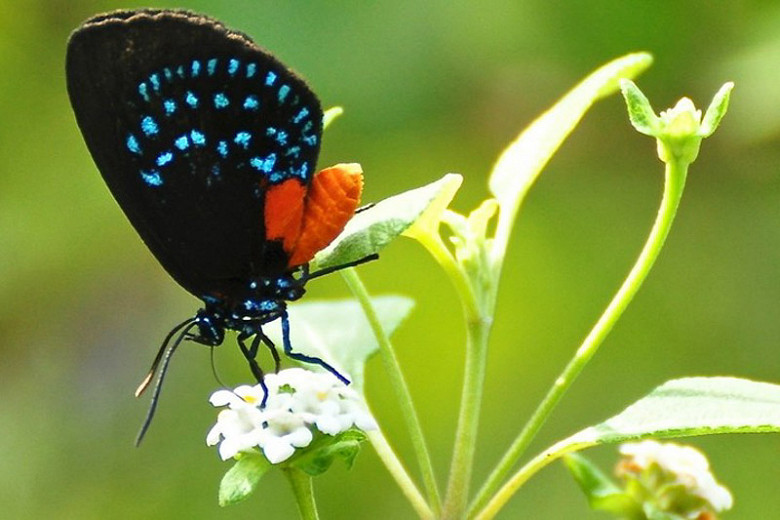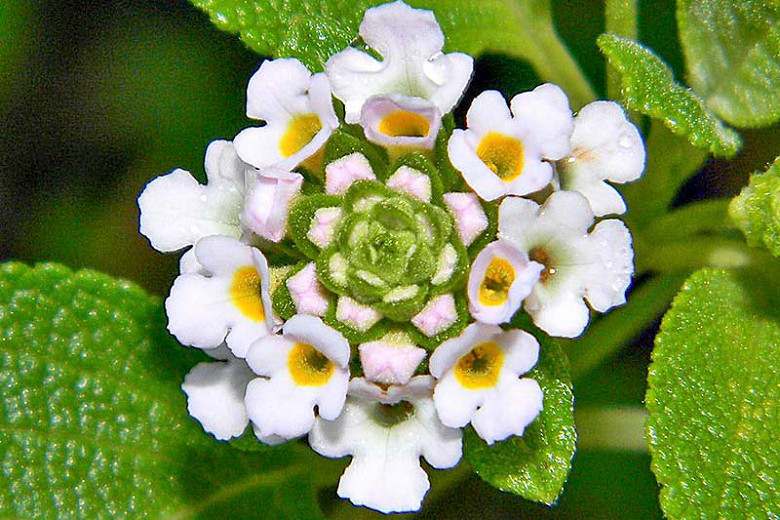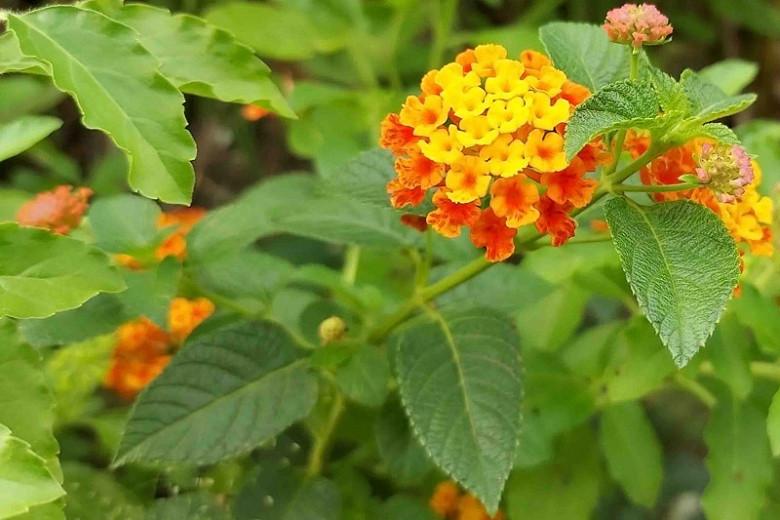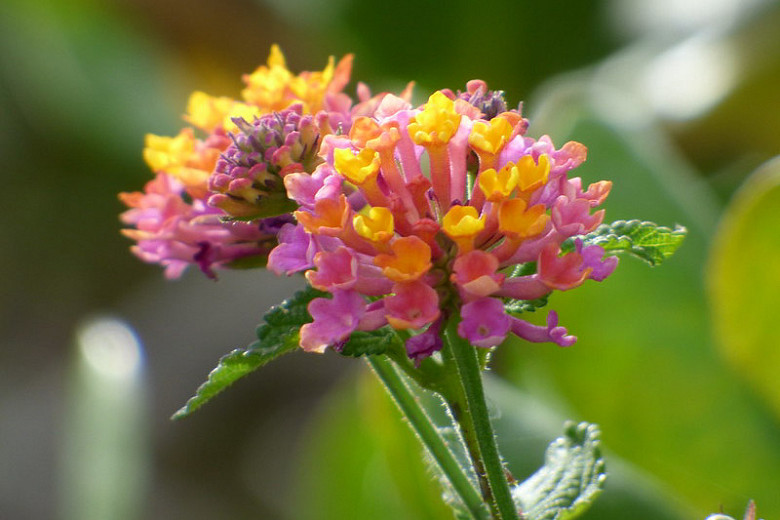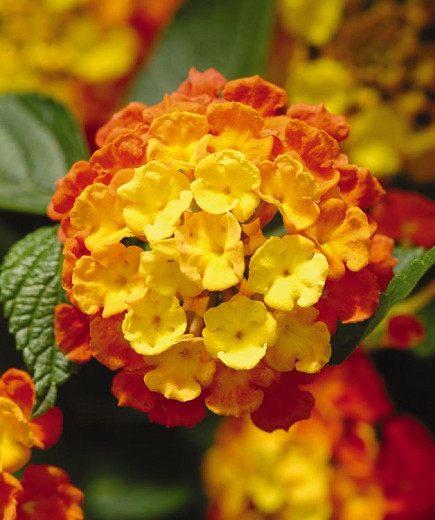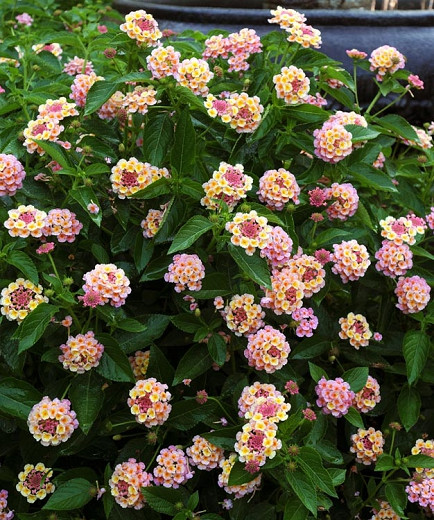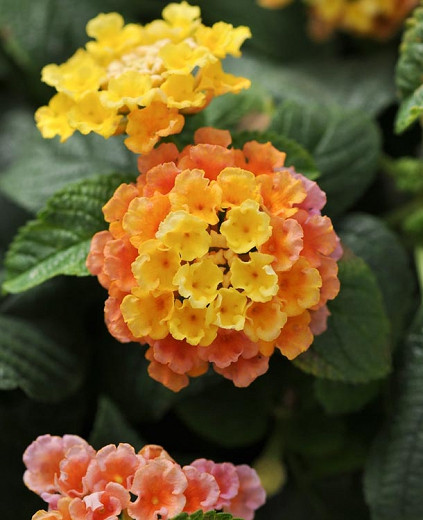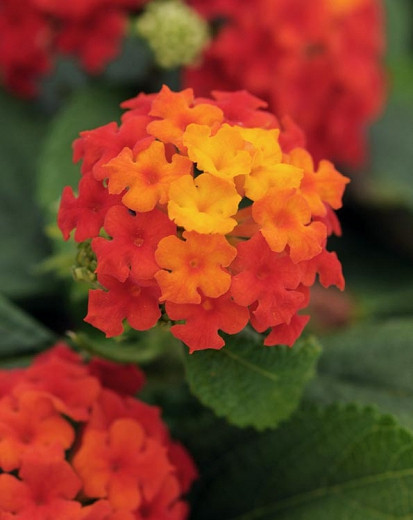Lantana involucrata (Buttonsage)
Lantana involucrata (Buttonsage) is a woody, heavily branched, evergreen shrub with oval, rough to the touch, toothed leaves. Dense clusters of small, fragrant, white to lavender flowers are produced year-round. The blossoms attract bees, hummingbirds, and a variety of butterflies and other pollinators. They are followed by small, purplish-black berries which are reportedly not as poisonous as the more widespread Lantana camara. The leaves are aromatic with a spicy, sage-like smell when bruised. Native to the coastal strands, dunes, hammocks, and pinelands of Florida, Buttonsage is a tough, resilient plant valued for its long blooming season and its resistance to drought, heat, deer, and salt. It contributes to biodiversity, helps protect the soil, and furnishes wildlife food and cover. It is listed as one of the best butterfly nectar plants. Easy to cultivate, it is a fine choice for foundation plantings or as a low hedge.
- Grows up to 3-5 ft. tall (90-150 cm) and 1-5 ft. wide (30-150 cm).
- Easily grown in sandy, dry, well-drained soils in full sun.
- Great for coastal gardens, tropical gardens, native plant gardens, or as a flowering hedge or screen.
- No serious pest or disease issues. Deer resistant.
- Can be pruned to a dense, compact form.
- Propagate by seed or softwood cuttings. No pretreatment is necessary, and germination begins in about 15 days.
- Highly toxic if ingested, contact with foliage may irritate the skin. Wear gloves and other protective equipment when handling.
- Toxic to dogs, toxic to cats, toxic to horses, toxic to humans.
- Native to southern Florida, the West Indian islands, Mexico through northern South America bordering the Caribbean, and the Galápagos Islands.
Requirements
| Hardiness | 8 – 11 |
|---|---|
| Plant Type | Shrubs |
| Plant Family | Lantana |
| Exposure | Full Sun |
| Season of Interest | Spring (Early,Mid,Late)Summer (Early,Mid,Late)FallWinter |
| Height | 3' – 5' (90cm – 150cm) |
| Spread | 1' – 5' (30cm – 150cm) |
| Water Needs | Low |
| Maintenance | Low |
| Soil Type | Sand |
| Soil pH | Acid, Alkaline, Neutral |
| Soil Drainage | Well-Drained |
| Characteristics | Showy, Evergreen |
| Native Plants | United States, Southeast, Florida |
| Tolerance | Deer, Drought, Salt |
| Attracts | Bees, Birds, Butterflies, Hummingbirds |
| Garden Uses | Hedges and Screens |
| Garden Styles | Coastal Garden, Informal and Cottage, Mediterranean Garden |
